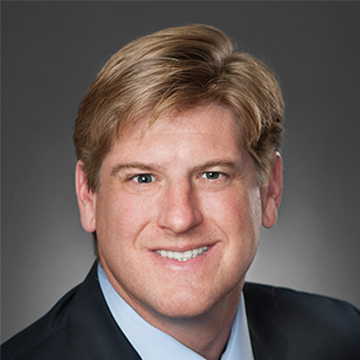
By Brad Stark, MS, CFP®
Co-Founder and Chief Compliance Officer
We've been asked often whether there are any rules of thumb when it comes to how much retirees can take from their savings each year.
Historically speaking, the number seems to be around 4% to 5%, with distributions adjusted for inflation. For example, if you need $40,000 in the first year of retirement, the next we plan on taking $40,000 + inflation.
Let's assume that retirement takes place in 1970. We start with $1,000,000 and invested it 50% in stocks and 50% in bonds. Then we run withdrawal scenarios from 4% to 9%. Forty years later, only the 4% withdrawal rate had money. All the others failed.
For a little additional perspective, from 1970 through 2011, the US Bond index had a return of slightly over 8% with the S&P500 a little under 10% and inflation as measured by CPI came in at 4.42%. If the market returns were higher than all but one of the distribution rates, how can failure occur?
In years when negative returns occur and you pull money from the portfolio, you have less money to make the “comeback” and thus require an even larger investment return. For example, if you lose 20% in your portfolio, you need it to rise 25% to get back to even. If you pull out an additional 7% during that downturn and thus lose 27%, you need a 37% return to get back to even.
Additionally, while returns in the chart are not static, the distributions continue. Thus, if a portfolio loses money and you pull out the same amount as before, your distribution becomes a much higher percentage. A $40,000 distribution on $1 million is 4%, but if you pull out the same $40,000 on an $800,000 portfolio after a dip, that is now a 5% distribution. Here are some planning items to consider.
Investment Management: As you head into the “distribution” phase of life, mentally prepare that your net worth will not increase like it had in the past unless you have “over saved.” As evident in the exhibit, most people struggle in retirement if they start out spending too much and thus cut into principal too early.
Consider focusing on income strategies as the primary objective with growth secondary as you head into retirement. If you can satisfy your lifestyle via the known income (dividends, rental income, pensions, social security, interest, etc.), then you are in a great place to ride out market downturns as you can “wait.”
If you rely heavily or demand steady market returns in order to satisfy your lifestyle, that is a stressful place to be where the statistics are very much against you.
Wealth Protection: In your planning, make sure you set aside mentally or literally about $250,000 for potential long term care costs. You can either segregate money in your accounts or reallocate funds toward insurance to cover this "what if."
Wealth Management: When it comes to planning and you think you may run out of money in the future, there are four major items to consider; life expectancy, expenses, inflation and investment return assumptions. Life expectancy according to the government is around age 82. We know historical rates of return and inflation statistics but the future is unknown. So focus on the areas you can control: spending, saving and your investment allocation.
Previously published in the Daily Sound
About Mission Wealth
Mission Wealth’s vision is to provide caring advice that empowers families to achieve their dreams. The founders were pioneers in the industry when they embraced the client-first principles of objective advice, comprehensive financial planning, coordination with other professional advisers and proactive service.
Mission Wealth does not sell any internal products; therefore, the firm’s recommendations are solely in the client’s best interests. Mission Wealth’s holistic planning process helps clients enjoy greater peace of mind.


